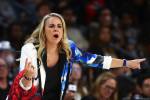NEVADA VIEWS: More students return to in-person learning — and not a minute too soon
As a typical Nevada seventh grader, Ariana was doing very well in middle school last year. She was earning good grades and was active in extracurricular activities. But when her school closed to in-person learning last March because of the pandemic, everything changed. Odds are her story reflects the stories of thousands of students across the state and millions more across the country.
As a minority student from a single-parent, low-income household, Ariana’s grades prior to school closures were mostly A’s and B’s. With the support of her mother, Maria, she took school seriously. In addition to earning good grades, Ariana participated in her school’s leadership program and STEM Club. But when in-person learning transitioned to distance education, her grades suddenly plummeted. Faulty technology wasn’t the cause — she had a school-issued laptop and satisfactory internet connectivity. Ariana simply stopped caring about school.
Fortunately, her mother and other adults in her life provided the support Ariana needed to turn things around. Now in the eighth grade, she is on track to start high school on time. But it hasn’t been easy.
The fall semester started in August with full in-person learning, but after just two weeks, she returned to distance education because of family concerns about the virus. For the remainder of the semester, a typical day consisted of logging into the online portal at 8 a.m. and completing assignments by noon. Her grades gradually improved. This semester, Ariana is very happy to be back in school, even if only two days a week under a hybrid model. She’ll take anything she can get.
Ariana’s cousin, high school senior Alondra, has faced a different set of challenges. She too comes from a single-parent, low-income household, the difference being she has three younger siblings, one each in the second, fourth and sixth grades. All have been at home for months, learning — or trying to learn — virtually. To no surprise, her youngest sibling had the most difficulty adapting. He simply did not understand why he wasn’t in school and became increasingly frustrated.
Four students spanning 10 grades, all in one household and all trying to get online and stay online at the same time for days, weeks and months on end. Their internet connection dropped constantly. Alondra has shouldered a huge amount of responsibility helping her siblings navigate virtual learning, including contacting their teachers. It’s an understatement to say her senior year hasn’t been what she expected.
Imagine similar situations in millions of households — many of which may not include caring adults — and it’s hard to deny the widespread closing of schools has been anything short of a travesty. In a survey conducted by the Washoe County School District last June, 73 percent of more than 18,000 responses indicated that “carrying out distance learning from home will place an incredible burden on my family.”
And then there’s the data. It’s long been known that young children and teens have shouldered some of the heaviest burdens during the pandemic but are the least affected — by far. According to the Nevada Department of Health and Human Services, deaths directly attributed to COVID-19 among those 17 years old and younger are statistically near zero. Further, of 460 schools in Nevada reporting infections, there were 1,510 confirmed student cases. Granted, schools in Clark County, home to more than 300,000 students, have been closed, but those in other counties have been open at least part-time for most of this school year.
Even with Clark County schools closed, these data illustrate the minuscule risk to students. For example, between two middle schools with a combined enrollment of nearly 2,000 students near where I live, 17 students and five teachers are known to have tested positive since August. The schools have been safely open at 50 percent capacity all school year.
The same holds true for Washoe County, where schools have been open most of the year. Among 145 schools, there have been 430 confirmed student cases and 316 staff confirmed cases. While that may sound like a substantial number, it isn’t. Washoe County is home to more than 64,000 students.
Most important, these numbers reflect cases, not hospitalizations or deaths. Nearly 300,000 people in Nevada have contacted the virus, but the actual number is much higher.
Tragically, there have been more student deaths from suicides in Nevada than from COVID-19. Add to the mix the drop-off in reporting of child abuse and child neglect cases. According to the Division of Child and Family Services, education-sourced referrals to Child Protective Services declined by nearly 40 percent from August through October of last year. Not enough eyes have been on the children, according to DCFS.
Although President Joe Biden has rightfully called the reopening of schools a “national emergency,” his administration’s reopening bar is set far too low. Schools should open to at least 50 percent capacity for grades K-12 versus the administration’s target of grades K-8, with attendance mandatory unless health issues justify otherwise. Nevada —especially now that Clark County will finally reopen schools — is wise not to follow such a low standard.
We may never fully understand the repercussions to students resulting from closed schools. I hope most students will regroup and survive just fine, just like Ariana. But a very real fear is that many may not.
Michael Raponi is a freelance writer in Carson City. Contact at michael.raponi@outlook.com.





























